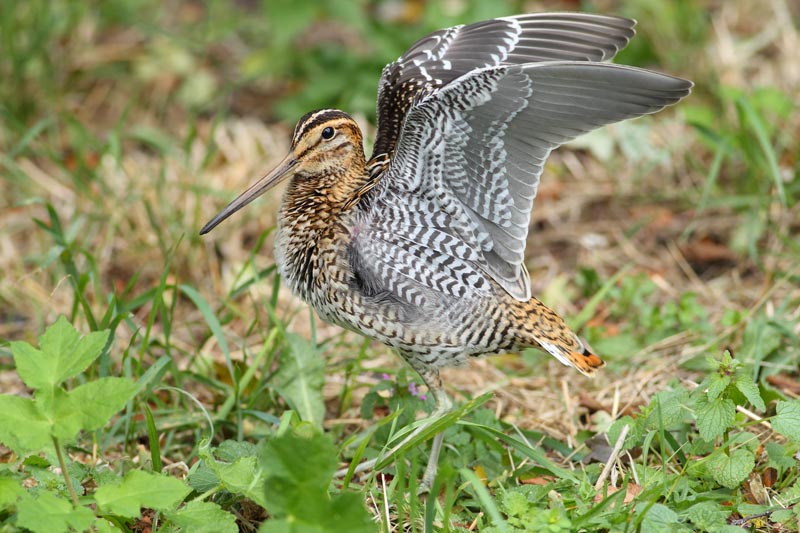Between the border of Poland and Belarus lies the impressive Białowieża Forest, one of Europe’s last primeval forests and one of the few remnants of the vast woods that once covered most of the continent. This exceptional habitat is a Natura 2000 site, an Important Bird and Biodiversity Area (IBA) and a UNESCO World Heritage Site, inhabited by a total of 250 bird species including Great Snipe Gallinago media, Greater Spotted Eagle Clanga clanga and the Aquatic Warbler Acrocephalus paludicola.
Sixty years ago, a large open fen covering an area of over 7000 ha at the eastern edge of Białowieża Forest (known as Biełaviežskaja Pušča in Belarusian) was drained as a result of a large scale wetland reclamation campaign in the Soviet Union. A new conservation project started last week to seek to restore an area of 1163 hectares of National Park. One of the largest fen rehabilitation projects in Europe, the project aims to construct 112 natural dams by the end of December.

Great Snipe © Glyn Sellors, from the surfbirds galleries.
While the peatland restoration project is taking part in the central part of the Białowieża Forest, its positive impact will even cross borders. The so-called Dziki Nikar mire is the source of the Narevka River, one of the main water arteries feeding the Polish part of Białowieża Forest. The dams will make the water level rise to the surface for the benefit of wildlife in both countries.
Why are peatlands so important?
Peatlands are a type of wetland with a thick organic soil layer made up of decaying plant material. While peatland is a more general term, APB BirdLife Belarus is here restoring a particular, wet kind of peatland called fen: a flat mire that collects water from rainfall and surface water.
Peatlands are unique ecosystems, essential to mitigate climate change because of their ability to store carbon. In fact, they store twice as much carbon as forests in a tenth of the area. They also store such large quantities of water that they help in flood protection and clean water supply.
Belarus is currently taking the lead in peatland restoration in Europe. APB BirdLife Belarus is playing a key role in the process, being a partner or implementing organisation in many such projects.
Over the last decade, up to 50,000 hectares of degraded peatlands have been rewetted in Belarus. Most of them are depleted through peat extraction, which makes restoration of the original mire a complicated and lengthy process. But this project is unique: after Dziki Nikar was drained for agriculture it was used for a relatively short time, thereby enhancing prospects for successful restoration of the original vegetation.
“Water – a key element for all the ecosystems of Belarus. Most of our rare species are associated with water but have become rare due to water shortages. If we restore the peatland, we will bring back these species. We will wait for the return of the Great Snipe, Greater Spotted Eagle and the Aquatic Warbler”, said Alexander Vintchevski, Director of APB BirdLife Belarus.
First results should be visible in the next two or three years. However, it will take at least another 30 years for the ecosystem to be completely restored. |